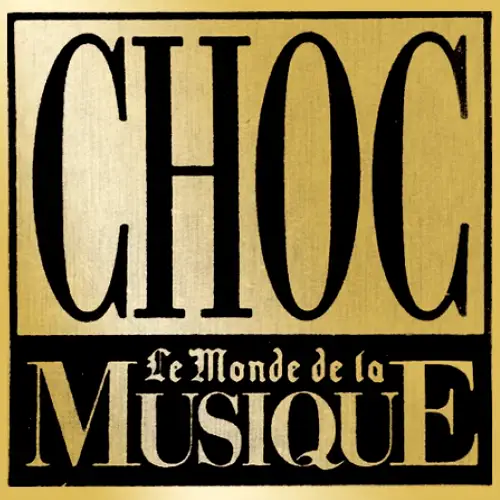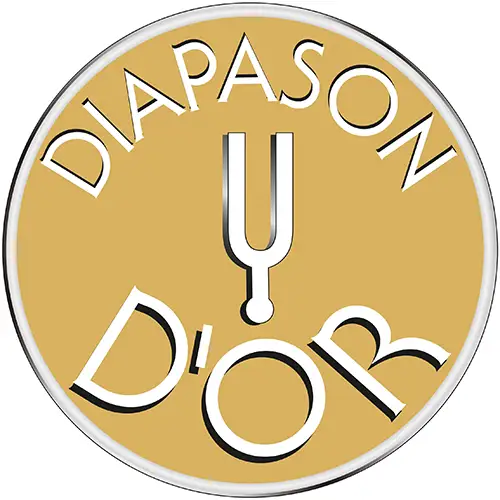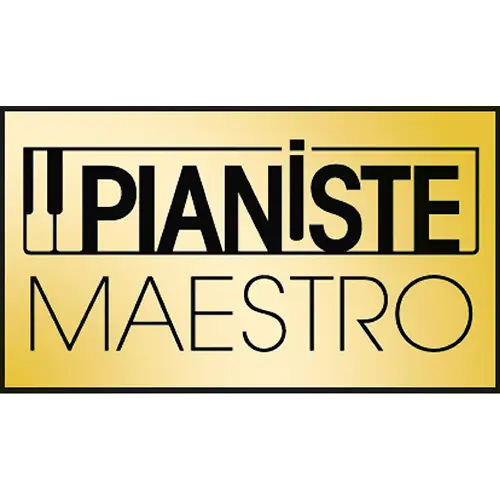Pythagoras of Samos is said to have asserted that ‘Everything is related to numbers’. In ancient times, he experimented on a one-stringed instrument to discover the ratio between notes and numbers. This interrelationship is still relevant today for the craftspeople at Schimmel.
For example, when they calculate and develop the cast-iron plates for specific instruments according to stability and acoustic criteria. Nowadays, they employ high-tech software for this purpose which is also utilized in the aircraft construction industry. The almost 1000 computer-controlled precision boreholes in the sounding body alone guarantee a fitting accuracy to a micron exact degree in the acoustic element of the piano. This is precision work which makes a major contribution to the consummate sound of our upright and grand pianos.



Konzert Concept (Konzert): This is an innovative design concept, developed and patented by Schimmel in 2000 based on the idea to implement all outstanding characteristics of our full size concert grand K 280 into this series where possible. For example, we are using the similar scale layout from tone 44 up to tone 88. Also, the soundboard design is similar to a grand piano. This way we transfer a big part of the sound characteristic of our K 280 also into our Konzert uprights. The action keyboard design is optimized to achieve a repetition as fast as an average grand piano.
Our hammer heads are made from highly elastic merino felt with high flexibility and low damping properties. The felt is made from the highest quality merino wool in a traditional fulling process in Germany. For the hammer cores, we use hardwoods in combination with tension-regulating under felts. The result is a great richness of tone colours in the different dynamic levels, as well as long-lasting tones due to low damping effect on the strings (short contact period due to highly elastic felt).
The mechanism (mechanism and keyboard) of a large concert grand piano offers the pianist the preferred touch. Control and ways to achieve express himself with a high possibility to influence the sound characteristic are optimally guaranteed by the long lever ratios. For this reason, we use our large concert grand piano action from our largest Konzert grand K 280 in all Konzert grand models, no matter how large. This means that all grand pianos in the Konzert series play like a large concert grand. With our Classic grand pianos, only the keyboard is slightly shortened. With an extraordinarily large mechanism, even with the smallest grand piano, they still remain very close to this concert like touch.
"Mineral key tops" are used for flat keys on all Schimmel instruments. These were developed by Schimmel and offer a more sensitive touch for pianists. In addition to this secure and sensitive touch, they are "glare-free" thanks to the matt surface, which s particularly advantageous for the pianist, especially on stages with spotlights.
The keybed of our grand pianos is made of high quality tone wood and designed to boost the frequencies that the soundboard is difficult to produce. This increases the richness of sound and the sound is more balanced overall. In addition, the player feels what he is playing through the transmission of the vibrations into the keyboard and thus has better control over his piano playing. The result is an improved ability to interact with the instrument.
All the resonance woods that produce the sound we call tone wood. For this we use selected mountain grown spruce from the Bavarian and Bohemian forests, the origin of tone wood of the German instrument makers. For this we only select perfect wood, grown slowly at high altitudes, so that soundboards can be joined that have optimal resonance characteristics. The trees are pre-selected in the forests and then specially cut and dried over long periods of time. Even with this intensive pre-selection, only about 2% of the timber obtained in this way is suitable for our soundboard production.
Up to 20 tons of string tension forces have to be absorbed in a grand piano. The soundboard should be influenced as little as possible by these enormous forces. To ensure this, we use a tension collector that releases the soundboard from these forces and allows it to vibrate more freely and unaffected.
Schimmel grand pianos are not built in a parallel shape, but in a conical shape. This means that the grand piano gets wider laterally from the keyboard in the direction of the string appendix. This creates an enlarged soundboard area compared to a traditional parallel design. In addition to a larger sound-producing-area, the string pressure forces can also be distributed more generously. The soundboard can vibrate more freely and produce more beautiful tone colours. This construction was patented in combination with the large concert mechanisms and the concert scale by Schimmel and is therefore unique.
The production of the soundboard is a complicated and lengthy process, the thickness of the soundboard at the various points, the wood moisture of the assembled parts and a subsequent "tension" of the soundboard when joining the soundboard on the strungback are just a few factors that have a major influence on the soundboard. Our extensive process ensures a richness of sound in all dynamic ranges, an even development of sound in all registers and long-sustain. Depending on the sound character that is to be achieved, our soundboards are manufactured differently. Soundboards with a membrane-like finish are particularly difficult to produce, but they also deliver excellent vibration characteristics.
The bridge transfers and distributes the vibration of the strings into the soundboard. Schimmel invented the so called mass-reduced bridge so that the bridge can withstand the string tension, transmit the energy optimally and at the same time prevent the soundboard from vibrating freely as little as possible. This involves milling a dynamic contour into the flanks of the bridge, which ensures that the richness of the sound is increased, and the sustain gets longer. An innovative idea that still received a patent even after more than 300 years of traditional piano making.
Der „Dynamische Klangstab“ wird während der Resonanzbodenherstellung mit dem Resonanzboden verspannt. Dadurch wird der Energiefluss im Resonanzboden bei unterschiedlich lautem Spiel reguliert, was eine größere Bandbreite an Klangfarben je nach Anschlag und Lautstärke ermöglicht. Dies bezeichnen wir als hohe klangliche Dynamik. (siehe Tabelle)
The string layout, the so-called scale, of a large concert grand offers optimal physical properties for an impressive grand piano sound. For all Schimmel grand pianos as well as all Konzert and the large Classic upright pianos C 126 and C 130, we have therefore transferred the middle register and the treble (tone 44 to 88) scale into all mentioned models identically from our large concert grand K 280. In this way, we achieve the same sound characteristics compared with a large grand piano.
An appendix of a string are areas of strings that are not made to vibrate directly by the hammer head, but will vibrate through energy transfer and generate partial tones that provide even more richness of sound and longer sustain and can strongly influence the sound character. These areas are very sensitive and need to be crafted with precision to sound right. For this reason, we use CNC manufactured scales. The scales of our Konzert grand pianos can even be tuned afterwards, so that they can later be voiced by ear. Depending on the model, either no scale, one or two scales are used, resulting in one, two (duplex) or three (triplex) sound-producing sections of a string.
We use pin blocks made of thin hardwood layers so that the instrument keeps its pitch optimally and is easy to tune. These pin blocks were developed by Schimmel in the 1950s as so-called "tropical climate resistant" pin blocks and have proven themselves over the decades.
Schimmel offers an extended manufacturer's warranty through its network of appointed dealers. Because we trust and stand by the quality of our instruments.
As early as the 1980s, Schimmel worked with computers to improve the design of its instruments, making the company a pioneer in the piano industry. Since then, the use of computers for research and development has been constantly further developed and today, under the name CAPE (Computer Assisted Piano Engineering), it represents a unique and all-encompassing software solution into which decades of development work and research results have contributed. On this basis, new ideas and designs are constantly being created that set standards in the industry.
On this basis, the use of CNC machines for the production of precision parts has been promoted since the 1990s. These are then added to our instruments exclusively by hand and are a prerequisite for achieving the highest quality.
Environmental protection and sustainability have been part of the company philosophy at Schimmel since the company was founded in 1885. This starts with the quality of our instruments. With a Schimmel instrument, you are purchasing a durable product that will be used for many years, often for generations. Which industry can say that it repeatedly receives requests for spare parts for its products that are more than 100 years old? Durability conserves resources. In addition, we manufacture our instruments from predominantly renewable raw materials - domestic wood from certified forestry and wool - and our cast iron plates are made in an elaborate process from recycled scrap metal. Wood leftovers and shavings from production are used to heat production in winter, and we generate solar power on the roof of the factory. Biofilters and a modern heating system complete our production. And of course, we produce according to high German environmental standards. This is true not only in our manufactory in Braunschweig | Germany, but also in Kalisz | Poland. In China, the production of our Fridolin instruments is environmentally certified according to ISO 14001 to ensure our high standards of environmental protection and sustainability here as well.
| Model series | K 230 |
| Model | Tradition |
| Length (cm | inch) | 230 | 7’6″ |
| Height (cm) | 102 |
| Width (cm) | 154 |
| Weight (kg | lbs) | 434 | 957 |
| Finish | Ebony high gloss |
| Standard hardware | Brass |
| Optional hardware to order | Chrome matte | Chrome gloss |
| Manufacturer | Wilhelm Schimmel Pianofortefabrik GmbH |
| Country of origin | Braunschweig | Germany |
| Action | Schimmel action made by Renner | Germany |
| Keyboard | Complete production Braunschweig |
| Keyboard coating | Mineral | Ebony |
| Number of keys | 88 |
| Approx. keybed height from floor to underside keybed / keytop (mm) | 613 | 726 |
| Pedals | Una corda (left) | Sostenuto (middle) | Sustain (right) |
| Installation of self player possible | yes |
| Installation twin tone ex works | retrofit at dealers workshop* (* since manufacturing year 2019) | no | no |
| Steel strings high performance spring steel with precise partial tone development | High-performance steel by Pitthan | Germany |
| Bass strings | made by Schimmel |
| Duplex / Triplex scale for definition see product details | tunable Triplex |
| Rim molded wood made of multiple Sapeli laminations | support beams made of mountain grown spruce | enforced bass side for a better energy reflection | yes |
| Three-dimensional crowned and tension loaded soundboard | membrane shaped cut |
| Dynamic soundbar for definition see product details | one |
| Bridge solid beech capped by a 5 layers of maple wood crosswise glued | made by Schimmel |
| Cast iron made traditionally | yes |
| Castor type | double wheel castor coated with soft material to protect floors and with brake |
| Soft close fallboard standard | yes |
| High gloss finishes are made of premium piano lacquer by layering process and hand polished | yes |
| Manufactured according to following standards | German Environment Standards |